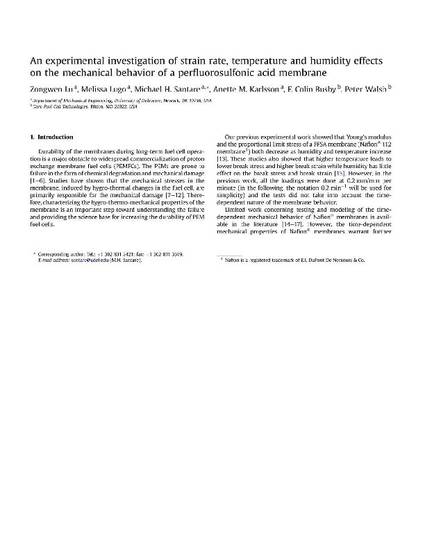
The time-dependent hygro-thermal mechanical behavior of a perfluorosulfonic acid (PFSA) membrane (Nafion® 211 membrane) commonly used in Proton Exchange Membrane Fuel Cells (PEMFCs) is investigated at selected strain rates for a broad range of temperatures and humidities. Tensile tests and relaxation tests are conducted to determine Young’s modulus and proportional limit stress as functions of strain rate, temperature and humidity. The results show that Young’s modulus and proportional limit stress increase as the strain rate increases, and decrease as the temperature or humidity increases. The results also show that the mechanical response of Nafion® 211 membrane is more sensitive to typical changes in strain rate or temperature than to typical changes in humidity. In addition, two temperature/humidity cycles are conducted to determine the steady state swelling behavior of Nafion® 211 membrane as a function of temperature and humidity. The results show that the membrane swells with increasing temperature and humidity, and that there is little or no hygro-thermal history effect for the swelling strains.

This research has been supported by W.L. Gore & Associates under a grant (DE-FC36-086018052) from the United States Department of Energy.